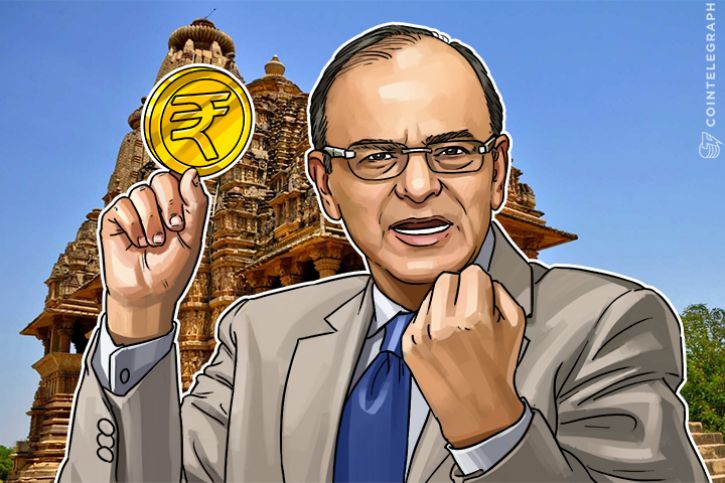The Indian finance minister Arun Jaitley presented the Union Budget to the parliament, India’s most important financial event expected with hopes and worries.
The budget was supposed to help an ailing economy hit hard by the demonetization of 86 percent of the currency in circulation on Nov. 8, 2016.
The government proposes to cut taxes for the people in the lowest income tax slab to five percent from the current 10 percent.
The government is also planning a massive penalty on cash use come April 2017.
An exercise in populism
Indian media outlets had been predicting a populist budget after the Indian president Pranab Mukherjee made a speech to open the budget session of the Parliament. The president had mentioned in his speech that at the core of his government’s policies are the welfare of the poor, the low castes, suffering populace, exploited, the left behind, farmers, workers and the youth.
The expectations of the media and the people turned out to be correct as Jaitley cut taxes on the people in the lowest of India’s three income tax slabs.
The Indian Express newspaper reported, “In a major step, Jaitley announced the reduction of the existing rate of taxation for individuals with income ranging between Rs 2.5 lakh to Rs 5 lakh to five percent instead of 10 percent. There will be a surcharge of 10 percent for those whose annual income is Rs 50 lakh to Rs 1 crore. Additionally, the 15 percent surcharge on Rs 1 crore or more remains unchanged. This is to make up for Rs 15,000 crore loss due to the cut in the personal income tax rate.”
Rs. 1 Lakh equals One hundred Thousand, while 1 crore equals 10 mln.
Fiscal numbers unrealistic
According to Reuters, India’s fiscal deficit in the first nine months to December 2016 was Rs. 5.01 tln or $ 73.87 bln.
It has reached nearly 94 percent of the budgeted target for the financial year ending March 2017. While the finance minister vowed to keep the deficit at 3.2 percent of GDP, the numbers seemed unrealistic. Varun Khandelwal, Managing Director, Bullero Capital, Delhi told Firstpost,”The fiscal deficit bit does not seem very credible. Jaitley is leaving room to exceed it at a later time. I think people will question the fiscal math over the next few days.”
The telecom spectrum auction conducted by the Indian government in October 2016 was a damp squib and managed to raise only 657.89 bln rupees whereas the government had hoped to raise at least 56.6 tln rupees.
Add to the fiscal constraints, the implementation of the pay commission and the “one rank, one pension” scheme for Indian army personnel. These challenges would need to be met along with India’s need for a massive push in infrastructure and rural development.
Penalty for the use of cash
The Indian finance minister may have cut taxes for the lowest in the tax slabs and this would bring some relief to India’s small but vocal middle classes but the challenge remains widening the country’s tax base, which is pathetic compared with the size of the country’s population.
It is estimated that only 1 percent of Indians pay any income tax. The reduction of personal income tax may prompt more individuals to start paying taxes and can also put more disposable income in the hands of the ones that already do.
However broadening the tax base is only possible if the government is efficient at tax collection. In this respect, the finance minister has introduced a 100 percent penalty on cash payments over Rs. 300,000, around $4,500, by any individual or business starting April 1, 2017. This is being done to deter cash transactions.
The finance minister’s assault on cash continues and India is determined to reign in cash transactions which account for 68 percent of all transactions in the country according to a CLSA report quoted by Business Standard.
Bitcoin price soars
If India is serious about going cashless, then Blockchain technology will have a serious role to play.
India can use e-wallets and digital payment systems based on the Blockchain.
The Institute for Development and Research in Banking Technology (IDBRT), which is the research body of the Indian Central Bank the RBI have already published a white papercalled Applications of Blockchain Technology to Banking and Financial Sector in India which has explored the idea of a central bank based digital currency.
While the government has been pushing for a cashless India, the effects have led to considerable anxiety in a class of Indians and Bitcoin price in India has soared.
Indian exchanges have been enjoying a premium on Bitcoin prices. At the time of writing of this article, 1 BTC fetched $965.25 on Poloniex while on ZebPay an Indian Bitcoin exchange 1 BTC was worth Rs. 68,301 or $1011.34! It would be interesting to see the effects of further restrictions on cash by the government in April on Bitcoin prices.
Will Indians move their transactions to a currency which can’t be tracked easily by the tax authorities? Only time will tell.







